What is Search Engine Optimization (SEO): A Compete Guide

Search engine optimization (SEO) is the process of assisting search engines in understanding your content as well as assisting users in finding your site and deciding whether or not to visit it via search engines.
What is Search Engine Optimization (SEO)
Search Engine Optimization (SEO) is a digital marketing technique that aims to improve a website’s exposure and selection on search engine results pages (SERPs). It consists of a set of tactics and procedures designed to increase organic (non-paid) traffic to a website from search engines such as Google, Bing, and Yahoo.

SEO includes a variety of components, such as keyword research, on-page optimization, content generation, link building, and technical optimization. These approaches try to improve a website’s relevance, authority, and comfort in the eyes of search engines, increasing its chances of ranking higher for relevant searches.
Knowledge of search engine algorithms, user behavior, and business trends is essential for successful SEO in order to develop techniques that are aligned with the website’s aims and target audience. Click this link to learn about digital marketing. Businesses that apply SEO best practices can improve their online exposure, attract more qualified traffic, and ultimately generate conversions and achieve their digital marketing goals.
Why is SEO Important?
Search engine optimization (SEO) is critical to online success. It not only increases views but also generates organic traffic to your website.
SEO improves the user experience by deliberately optimizing the structure, content, and usability of your website, fostering confidence and trust among visitors. This trust is critical for converting leads into customers.

SEO is a low-cost marketing strategy that produces long-term, long-lasting impacts without the ongoing costs associated with paid advertising.
In today’s competitive digital market, a strong SEO strategy is critical for staying ahead of the competition and securing a high ranking in search engine results. SEO allows firms to broaden their reach globally, tapping into new markets without making significant investments in traditional marketing methods.
investing in SEO ensures the long-term success and expansion of your online presence.
Understanding Search Engines Optimization
SEO (Search Engine Optimization) is the practice of increasing a website’s exposure on search engine results pages (SERPs) in order to attract organic (non-paid) visitors. It entails improving numerous aspects of a website’s content, meta tags, graphics, and site structure in order to increase its ranking in search engine algorithms.
Effective SEO techniques strive to fit with search engine rules and user intent by using keywords, backlinks, and other tactics to boost a website’s authority and relevance, resulting in more visitors.
How to Search Engine Optimization (SEO) Work?
Crawling
To methodically traverse the web, search engines use automated programs known as crawlers or spiders. These bots follow links from one website to another, gathering information about each one they visit. They also find new pages and make improvements to old ones.

Indexing
Crawlers gather information from online pages, which search engines categorize and store in vast databases known as indexes. Indexing is the process of examining a page’s content, keywords, meta tags, and other pertinent information to create a searchable database.
Ranking
When a user types a search query, the search engine returns relevant sites from its index. Search engines utilize complex algorithms to select which pages show in what order on the search engine results page (SERP), taking into account variables such as relevance, quality, authority, and user experience. Pages that best match the search query and fit the algorithm’s requirements appear higher in the SERPs. Learn ability to Speak English fluently in this blog.
Displaying Results
Search engines show the most relevant and authoritative pages on the SERP in response to a user’s query. Users typically pay the greatest attention to and click on the top-ranked results. Search engines may also include features like featured snippets, knowledge graphs, and ads to improve the user experience and provide more relevant content.
Major Search Engine Algorithms
Major search engine algorithms are sophisticated sets of rules and calculations that search engines such as Google and Bing employ to assess the relevancy and ranking of web sites in search results. These algorithms are always evolving to give users the most accurate, relevant, and high-quality search results. Some of the main search engine algorithms are:
- Google's PageRank
- Google Panda
- Google Penguin
- Hummingbird
- Google Pay Day
- Mobile Geddon
What is On Page SEO (Search Engine Optimization)
On-page SEO (also known as on-site SEO) is the practice of optimizing web pages and their content for both search engines and users. It can help pages rank higher in Google and increase organic traffic.
On-page SEO duties typically include optimizing for search intent, title tags, internal links, and URLs.
Here are some key aspects of on-page SEO:

- Keyword Research and Optimization
Identify important keywords and carefully place them in page titles, headings, meta descriptions, URL structures, and content. However, avoid keyword stuffing, as this can result in search engine penalties.
- High-Quality Content
Create informative, entertaining, and valuable content that meets user expectations. The content should be original, well-written, and relevant to the intended audience. Long-form material generally performs better in search engine rankings.
- Optimized Page Titles and Meta Descriptions
Write descriptive and attractive title and meta descriptions that appropriately reflect the page’s content. Include goal keywords naturally while making the language appealing to users, as these aspects will display in search engine results.
- Header Tage
Use header tags (H1, H2, H3, etc.) to organize material hierarchically. Include target keywords in headers to help search engines understand the value of specific parts.
- Image Optimization
Use informative filenames, alt text, and captions to optimize your photographs. This helps search engines grasp the content of photos and makes them more readily available to consumers.
- Page Loading Speed
Optimize pictures, minify CSS and JavaScript files, use browser caching, and use content delivery networks to speed up website load times. Faster-loading pages increase the user experience and are selected by search engines.
What is Off page SEO
Off-page SEO refers to measures made outside of your own website that affect your ranks in search engine results pages (SERPs). While on-page SEO focuses on optimizing parts of your website, such as content and HTML source code, off-page SEO employs strategies to increase your website’s authority, relevance, and general visibility on the internet.
Why is off-page important? in Search Engine Optimization (SEO)
Off-page SEO is essential for improving search engine ranks, increasing website traffic, enhancing brand reputation, and building long-term online presence and authority. It complements on-page SEO work and is critical to a thorough and effective search engine optimization plan.
- Improved Search Engine Rankings
Off-page SEO factors include backlinks from reputable websites, social network signals, and online mentions, which are essential ranking criteria for search engines like Google. By improving these characteristics, you enhance the possibility that your website will appear higher in search engine results pages (SERPs) for relevant keywords.
- Enhanced Website Authority
Backlinks from respectable and related websites are “votes of confidence” in your website’s authority and reliability. Search engines regard websites with a higher number of quality backlinks as more authoritative, and thus are more likely to rank higher in search results.
- Increased Website Traffic
Off-page SEO strategies, such as social media marketing, influencer outreach, and guest blogging, can increase traffic to your website from sources other than search engines. This diverse traffic can lead to increased brand exposure, more leads, and, eventually, more sales.
- Builds Brand Reputation
Positive online reviews, mentions, and interactions with influencers help your brand establish a positive reputation. This can build confidence among consumers and future customers, resulting in more traffic and conversions.
What is Technical (SEO)
Technical SEO is the optimization of website technology and features to improve search engine crawling, indexing, and overall website performance. It entails optimizing site speed, mobile friendliness, URL structure, metadata, and resolving crawl issues. Technical SEO guarantees that search engines can efficiently access and interpret website information, resulting in higher ranks and exposure on search engine results pages (SERPs).
Why is technical Search Engine Optimization (SEO) important?
Technical SEO is vital because it guarantees that your website is search engine optimized, offers a great user experience, and ranks high in search results, resulting in more organic traffic and potential clients.
- Improved Site Crawling and Indexing
Technical SEO ensures that search engine bots can properly crawl and index your website’s content. By optimizing technical features like site structure, XML sitemaps, and robots.txt files, you may assist search engines in understanding your site’s layout and prioritizing relevant pages for crawling.
- Enhanced User Experience (UX)
Many technical SEO adjustments improve the user experience. For example, optimizing page performance can minimize loading times, resulting in lower bounce rates and increased user engagement. A well-structured website with easy navigation enhances usability, making it easier for users to find the information they require.
- Higher Search Engine Rankings
Technical SEO builds the groundwork for improved organic search visibility. When search engines can crawl and scan your site efficiently, your content is more likely to rank highly on search engine results pages (SERPs). Mobile friendliness, secure surfing (HTTPS), and structured data markup can all help you rank higher.
- Faster Website Performance
SEO optimizations frequently include increasing site performance, which is a key ranking factor for search engines. Faster-loading websites rank higher and give a better user experience, resulting in increased conversion rates and lower bounce rates.
How to Search Engine Optimization (SEO) Content Strategy?
To execute an effective SEO content strategy, set clear goals, do audience research, and analyze keywords. Plan content ideas, write high-quality content with selected keywords, and optimize on-page components. Social media, email marketing, influencer collaboration, and link building can all help you promote your content. Performance indicators should be monitored on an ongoing basis to ensure continuous optimization and improvement.

Content Planning
- Keyword Research
Determine the appropriate keywords and phrases that your target audience is searching for. Utilize keyword research tools to determine search volumes, competition levels, and similar terms.
- Audience Analysis
Determine your target audience’s interests, preferences, and pain areas. Tailor your material to meet their wants and offer solutions to their difficulties.
- Content Goal
Define specific objectives for your content, such as raising brand awareness, generating leads, driving sales, or increasing website traffic.
- Content Calendar
Create a content calendar that includes themes, formats, publication dates, and responsible team members. To keep your audience engaged, ensure that you publish consistently.
Content Promotion
- Social Media Promotion
Publish your material across several social media networks to boost its reach and engagement. Use appropriate hashtags, tag any influencers or brands referenced in your material, and promote sharing.
- Email Marketing
Use your email list to push new material to subscribers. Create intriguing email newsletters with teasers or samples from your most recent blog posts or articles.
- Influencer Outreach
To increase the reach of your content, collaborate with influencers or industry experts. They can distribute your content to their followers, increasing your audience reach.
Content Creation
- High-Quality Content
Create material that is useful, educational, and engaging for your target audience. Focus on solving their issues, answering their inquiries, or entertaining them.
- Optimized Content
Make your content more search engine friendly by naturally inserting relevant keywords throughout the text, including titles, headings, meta descriptions, and picture alt tags.
- Content Optimization
Make sure your material is user-friendly, mobile-responsive, and optimized for fast loading times. Use descriptive URLs, optimize pictures, and use structured data markup when appropriate.
Measuring SEO Success
Key Performance Indicators
Keep track of how much organic traffic your website receives from search engines. This includes monitoring overall visits, new vs. returning visitors, and traffic by landing page.
Keep a watch on your keyword ranks for certain search keywords. Track changes in keyword positions over time to assess the efficacy of your SEO strategy.
Calculate the percentage of website visitors that complete desired actions, such as making a purchase, filling out a form, or subscribing to a newsletter.
Monitor the percentage of users who click on your website’s link in search engine results pages (SERPs). A higher CTR indicates that your content is engaging and relevant to visitors’ search queries.
SEO Tools for Analysis
- Google Analytics
Provides detailed information about website traffic, user behavior, conversions, and other topics. Use it to monitor organic traffic, referral sources, conversion funnels, and user demographics.
- Google Search Console
Provides data and tools to help you monitor and improve your website’s visibility in Google search results. Use tools such as performance reports, index coverage, and a URL inspection tool to detect problems and optimize your site for search.
- SEMrush
Contains extensive SEO metrics, such as keyword research, backlink analysis, site audits, and competitor analysis. Use it to monitor keyword ranks, compare competitors, and find areas for development.
- Ahrefs
Gives information on backlink profiles, organic keyword rankings, content analysis, and site audits. Use it to track backlinks, keyword performance, and content gaps.



